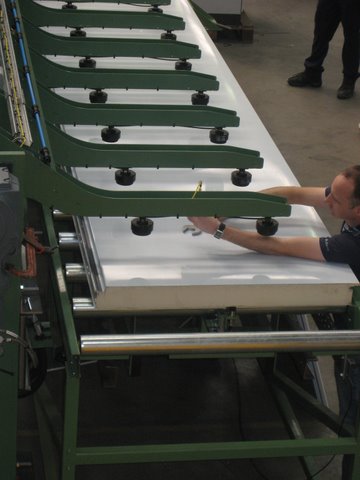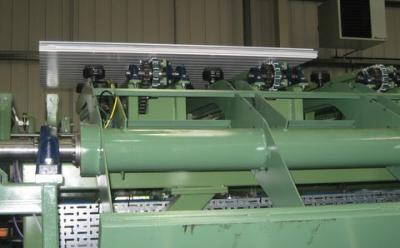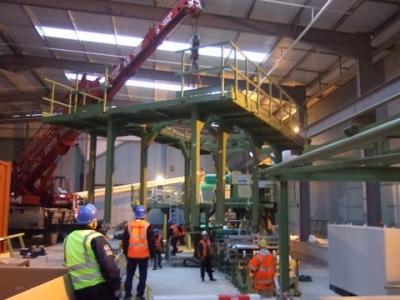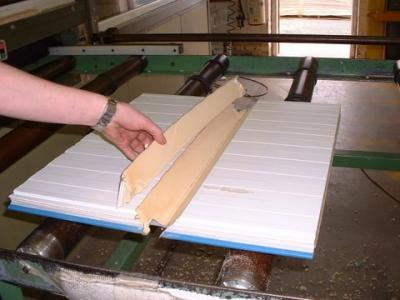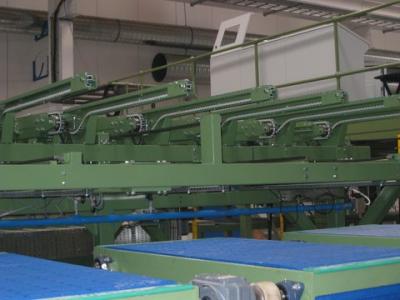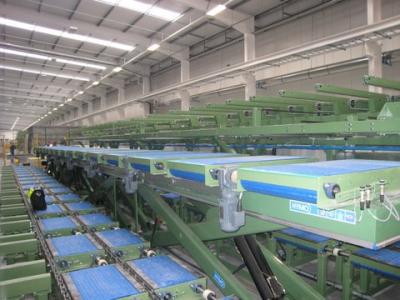Wall Panels
Wall and Roof Panels - Stacking & Buffering
To receive panels pallets of suitable length are automatically assembled from 1.2M or 2.4M lengths. They are stapled together automatically and Polystyrene foam strips are stapled to the pallet battens to protect the panel surface.
Video 1 - Pallet Assembly
Pallets are then auto-fed to the stacking area where they are lifted on a scissor lift to receive panels.
Wall Panels are received from a skin and PU production line at 20M/min. They are conveyed past a Buffering area the size of a Tennis court to a 4 section Turn Over unit. The panels are from 600mm to 1200mm wide X 45mm to 200mm thick X 1.1M to 20M long. Scheduling is controlled from a SAP system.
Video 2 - Panels to Turn-over and Stacking
The complete stack is lowered and transferred to an outfeed conveyor as the next pallet is received and lifted to continue stacking immediately. The finished stack is taken through a packing area for corner protection and thence through a spiral wrapper for immediate loading onto road transport. To cater for errors a side-transfer siding is available in the Packing Area decking.
Video 3 - Stack through Wrap
To achieve a continous speed of 20M/min the Turn Over and further feed system are critically zoned into 4 areas. Short panels are presented for turnover in 2 areas to maintain a constant feed. A raising backbone conveyor receives and constantly feeds the panels to a short high speed laydown section.
As elsewhere the precision of laydown is facilitated by extending rubber chain-topped fingers. These convey out as they extend at twice the extension speed and retract with the chains in reverse to leave the panels stationary relative to the stacking point.
Video 4 - Short Panel Stack
The Buffering Table has a number of uses: It can be used to take panels to 1 of 4 saws for processing; It can be used to buffer panels in any format across its area to either re-arrange the FIFO norm or to allow another batch of panels to overtake a premade batch.
To avoid panel surface damage Astroturf is used to fully support the skins when not being conveyed by the rubber-topped chains.This also allows the endothermic nature of the PU curing to be relieved. A further detail, when on rollers, is that in the event of a delay warm panels are joggled backwards and forwards to aviod marking the undersurface.
Video 5 - Buffering and Transfer to Saws

.jpg)

